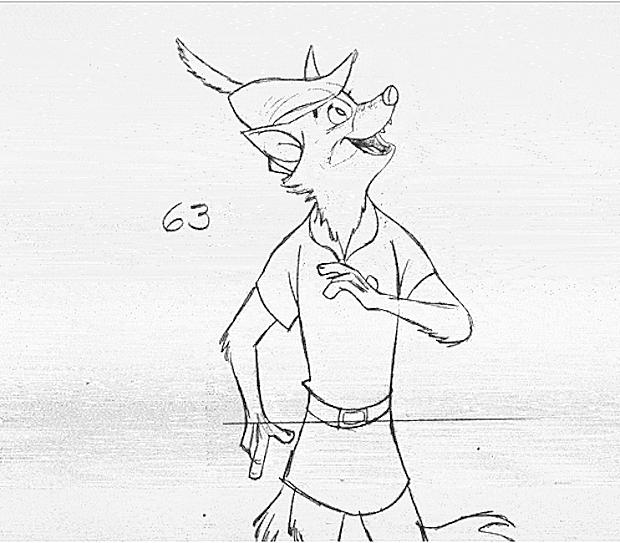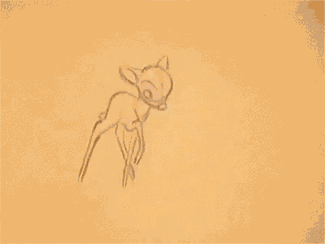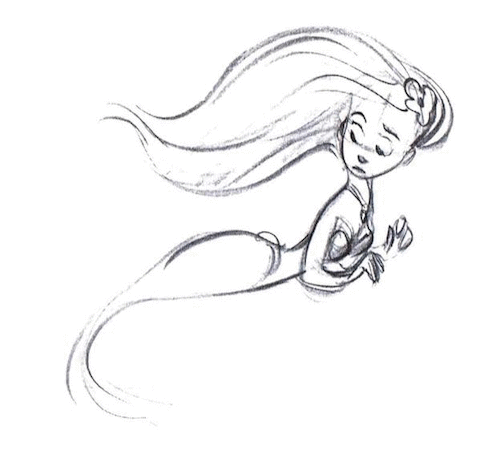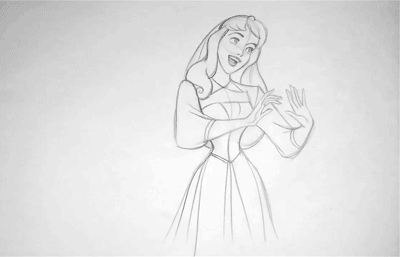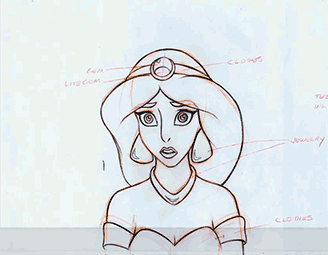Classic Disney Pencil Animations Come to Life in GIFs
It’s too bad that GIFs came into their own as a creative tool just as the era of hand-drawn animation came to a close. Most GIFs are two to six seconds long, which is the length of most scenes in traditional animation. (What animators call a scene is like a shot in live-action film.) An animator — then and now — can spend days or weeks trying to get that tiny scene right. But with hand-drawn animation, once the “pencil tests” were approved, artists in the ink and paint department would painstakingly redraw the animator’s lines onto a transparent “cel.” Sometimes the emotional expressiveness of the drawings got lost. These GIFs from the old pencil tests let us see the animators’ original visions in a way we didn’t have access to before.
An animation student’s first assignment is to animate a bouncing ball, a few seconds that would loop over and over again. Everything you need to know about animation physics is in that bouncing ball, which builds momentum slowly — stretches as it speeds down — goes splat on impact…slowly morphs back to its round shape and then shoots back up like an oblong missile. The early days of cartoons are often called “rubber hose animation” because animators relied too much on “squash and stretch.” But the artists at Disney had to achieve a new level of subtlety with the deer in Bambi, trying to capture that feeling of squashing and stretching while still making the animals feel boney.
Glen Keane was part of the new wave of animators who came to Disney in the 1970s and ’80s, the second generation after Walt Disney’s original “nine old men.” He was a master of “follow through,” when an element like hair, clothes, or a tail lags a split-second behind the main movement of the character.
Notice the way Sleeping Beauty draws back up in delight before addressing the room. Every movement needs anticipation, like the wind up of a baseball pitcher.
Animator Marc Davis based his heroine on model Helene Stanley, whose gestures were filmed and traced over in a technique called Rotoscoping.
One of the most important tricks to make a drawing seem alive is to have a character react to something — consider his or her (or its) options — and then take action. Animators call them “thinking poses.”
Milt Kahl was renowned for his technical accuracy, and the way he infused his characters with his own sardonic sense of humor — which made him a perfect fit to animate Shere Khan in The Jungle Book. Notice how the tiger’s chin is leading the movement of the head, which swings down in an arc — ending with an eyebrow raise. In nature, nearly all movements happen in an arc.
Computer animators use the same bag of tricks, but they have to work harder to achieve that sense of fluidity. Some artists at Disney are finding new ways to incorporate hand-drawn styles into computer elements, like their Oscar-winning 2012 short film Paperman.
Sign up for our daily newsletter
